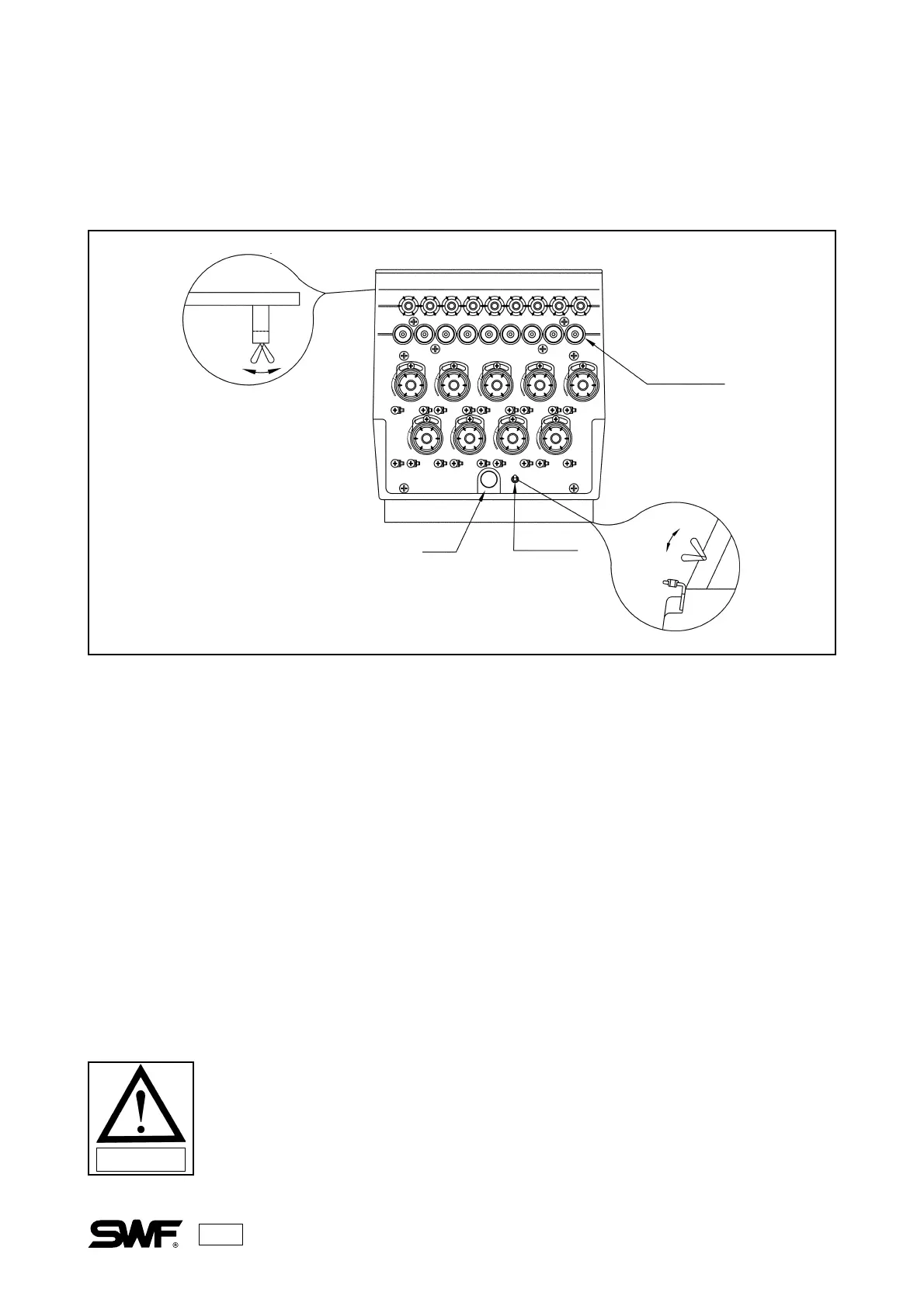20
ON/OFF BUTTON ON THREAD TENSION ADJUSTMENT
BOARD
For normal operation, press the ON/OFF button or throw the toggle switch to turn the machine on The light
will indicate that the machine is on. If you have a button, the light is in the button; if you have a toggle
switch, it is below the toggle switch
When the machine stops after a thread break is detected, you can move the frame backward to the location
of the thread break using the STOP button, and start the machine again to pick up the stitching. This is
essentially an edit of the design.
If you want to back the machine up for any reason when a thread break has NOT occurred, you must press
the ON/OFF switch twice. When the light is blinking, you can back up the machine to the desired location.
When an upper or lower thread break is detected the light on the head blinks. After fixing the thread and
backing up to the point of the break, press the START button to start stitching again.
On multi-head machines, you can turn one or more heads off by throwing the toggle switch to the off
position or pressing the ON/OFF button until the light goes off.
NOTICE
The take-up lever continues to operate even when the head is turned off. This
movement can cause the needles to become unthreaded. A rubber magnet bar
can be used to prevent the thread from pulling out of the needle.
Toggle Switch
Lamp
ON
ON
OFF
OFF
Thread detection
delete
Thread detecting roller
